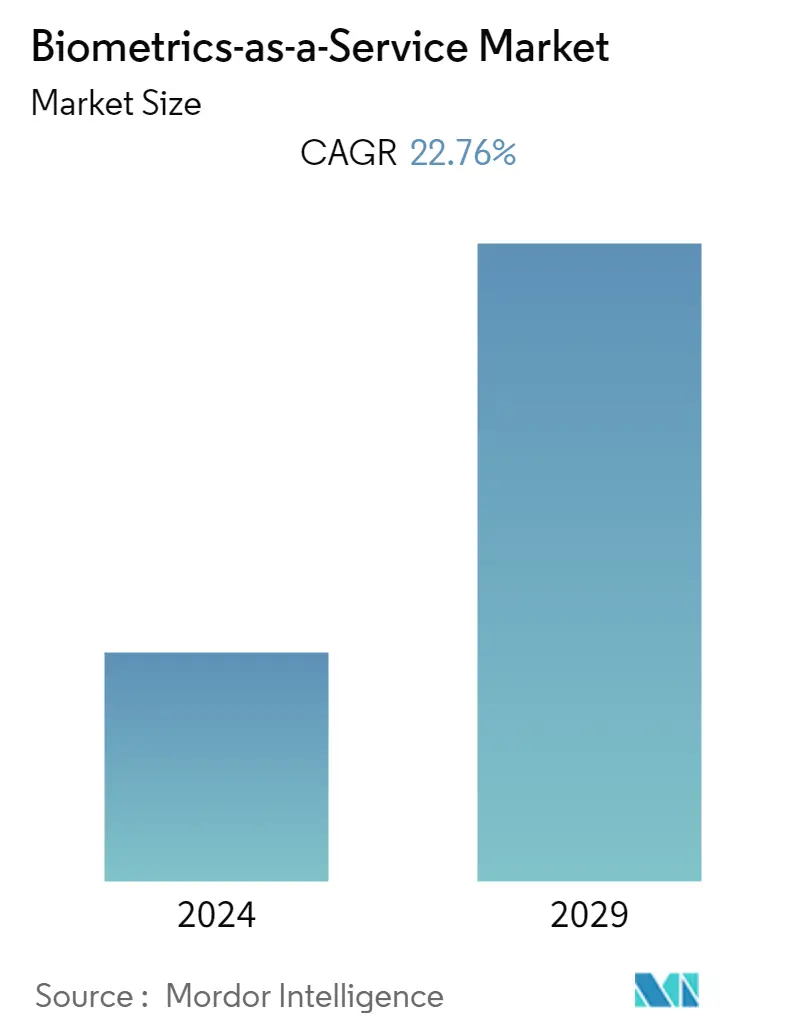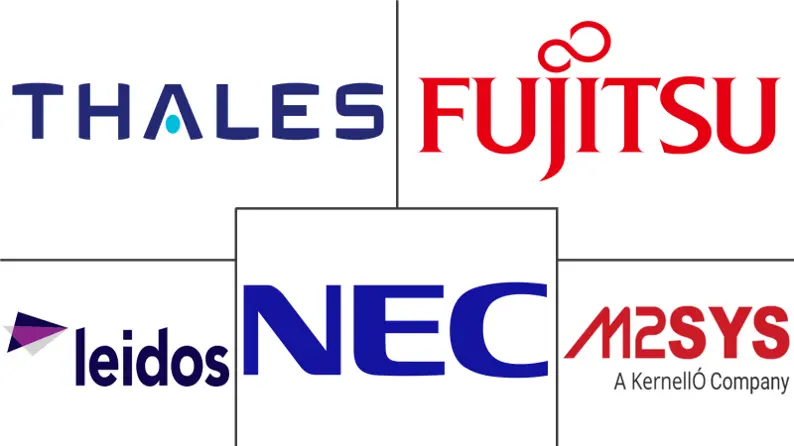Market Size of Biometrics-as-a-Service Industry

| Study Period | 2019 - 2029 |
| Base Year For Estimation | 2023 |
| CAGR | 22.76 % |
| Fastest Growing Market | Asia Pacific |
| Largest Market | North America |
| Market Concentration | High |
Major Players
*Disclaimer: Major Players sorted in no particular order |
Need a report that reflects how COVID-19 has impacted this market and its growth?
Biometrics-as-a-Service Market Analysis
The biometrics-as-a-service market was valued at USD 4.75 billion in 2020 and is expected to reach USD 16.03 billion by 2026, registering a CAGR of 22.7% during the forecast period from 2021 to 2026. The global biometrics demand is anticipated to develop at a significant growth rate, owing to the rising number of terrorist activities, the increasing theft activities about crucial data, and information that have raised concerns regarding national security. Significant factors, such as growth in the e-passport program, government support, and extensive use in criminal identification, are expected to drive the market's growth over the forecast period majorly. The recent COVID-19 outbreak is also becoming an emerging driver for contactless biometric solutions.
- Organizations across various sectors, where security remains the primary concern, are investing heavily in their security systems, focusing on access control systems. The defense, law enforcement, and government institutions are some of the prominent users of this technology. Moreover, the soaring need to strengthen national security augmented the growth of these systems, globally. Iris recognition is used in different countries for a wide range of purposes, including passport-free automated border crossings. The biometric-as-a-service solution can be leveraged to not only tie disparate identity information across the business but also enable the integration of different types of biometrics as best suited to particular business needs and risk levels.
- One of the key trends witnessed in the market studied is a model shift in business discourse toward more privacy and fewer security threats. The end-users are increasingly expecting for integrated solutions, rather than depending on traditional methods. Consumer biometric applications have expanded rapidly over the recent years, with increased adoption of mobile devices. The consumer electronics sector is dominated majorly by security and access control devices, owing to the approval of biometric systems. Thus, it is supporting the growth of the market. For instance, WhatsApp, a popular messaging app, launched an additional privacy measure on the Android platform. The company claims that users will soon be able to secure their accounts in the form of biometric authentication through fingerprint sensors.
- Integrating biometrics with the cloud, which is the main focus area for vendors presently, enables cloud - enhanced capabilities and technologies to be assimilated on the entire biometrics' infrastructure of a service provider. For instance, in July 2019, SkyBiometry updated the version of its cloud-based face detection and recognition algorithm that included significant enhancements that make the algorithm much more accurate and allow for a broader range of facial attributes in the detection process. Further, Fujitsu partnered with ImageWare Systems (IWS) to provide Biometric-as-a-Service solutions. With a combination of Fujitsu's cloud Infrastructure-as-a-Service (IaaS) and Software-as-a-Service (SaaS), along with IWS' biometrics authentication technology, enterprises can be prepared for a BYOD workplace environment and security-enhanced services for mobile transactions.
- The COVID -19 outbreak and the nationwide lockdown have impacted many industries around the world, so does the studied market. Due to the recent COVID-19, the biometric market has witnessed a significant shift in the adoption pattern. The COVID-19 has developed a massive space for contact-free sensing solutions. Although the market is seeing a decline in touch-based technologies, the touchless technologies are now flooding the market. The trend can be seen across various end-users like offices, hospitals, airports, and secure locations that rely on fingerprint readers, card access, or manual processes. The significantly growing adoption of non -contact biometric attendance in these applications is also driving the overall market. In the last 3 - 4 months, the market has witnessed a massive decline in fingerprint recognition as many government agencies are claiming that there is a risk of infection via these commonly touched surfaces.
